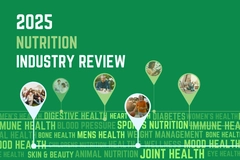
- Industry news
Industry news
- Category news
- Reports
- Key trends
- Multimedia
Multimedia
- Journal
- Events
- Suppliers
Suppliers
- Home
- Industry news
Industry news
- Category news
- Reports
- Key trends
- Multimedia
Multimedia
- Events
- Suppliers
Suppliers
Plastic Health Summit warns of “plastic coffin” effect on human health and environment

21 Oct 2019 --- In a world first in Amsterdam earlier this month, the Plastic Health Summit brought together experts to consider the impact on health of BPA, PFAS, phthalates and other chemical additives commonly found in plastic. Although still in its infancy, research in this space is growing. The conference saw an array of research projects presented and ended with a joint statement from experts calling for more research to better understand the consequences of microplastics, in particular, on human health.
“This year, 2019, has been big for information about plastic and specifically, its human health impacts. First, it was the plastic garbage patches. Then research showed how ocean plastics are killing marine life and entering our food chain. The year after that, additional data showing how plastics concentrate toxins and move from the digestive track into the muscles and tissues of our bodies was released. It’s an ongoing story of how bad plastic really is,” Troy Swope, CEO Footprint, who spoke at the event, tells PackagingInsights.
Swope’s talk focused on the “sea of plastic” that, he says, has become our daily reality. “Simply visit a grocery store and you will see a literal sea of plastic packaging in all aisles of the store. Produce, meats, drinks, processed foods, all of it in plastic. It is almost inescapable.” Held on 3 October, scientists presented the first research results on the effects of plastic particles on human health.
Held on 3 October, scientists presented the first research results on the effects of plastic particles on human health.
A recent Norwegian University of Science and Technology (NTNU) study spotlighted the risk that comes with our lack of knowledge around the chemicals used in plastic and how they may impact health.
The team estimated that more than 4,000 chemicals are used in modern-day plastic packaging production. However, with over 5,000 different types of plastic puzzled together to create plastic packaging, the number of chemicals used for production will increase further, the research suggests. It is, therefore, becoming increasingly difficult to ensure safety standards.
Meanwhile, certain plastic chemicals have long been flagged as problematic. Bisphenol A (BPA), a chemical used to create plastics, was listed as toxic for human reproduction by the General Court of the EU this July.
But soon after, research from Washington State University worryingly found that BPA alternatives used in “BPA-free” bottles, cups, cages and other items caused reproductive problems in mice. “BPA-free” or not, plastic products that show signs of damage or aging cannot be considered safe, the researchers warned.
Another substance of concern for health are polyfluoroalkyl substances (PFAS), which are used to repel grease and water in packaging materials. The chemical’s signature elemental bonds of fluorine and carbon are extremely strong and difficult to disintegrate in the environment and in living beings. These chemicals have been linked to a number of health risks such as cancer, elevated cholesterol and decreased fertility. In a positive move, Denmark announced in September that it would introduce a ban on the substance in July next year – based on the potential human health risk.
Are we inhaling plastic?
Swope highlights a report that was published by the Center for International Environmental Law (CIEL). The report sought to demonstrate how the ubiquitous nature of plastic products and packaging directly leads to our ingestion and inhalation of plastic particles.
“Consumer packaged goods’ use of plastic leads to ingestion and/or inhalation of large amounts of both microplastic particles and hundreds of toxic substances with known or suspected carcinogenic, developmental, or endocrine-disrupting impacts,” the report, Plastics & Health: The Hidden Costs of a Plastic Planet, reads.  Research estimates that more than 4,000 chemicals are used in modern-day plastic packaging production.
Research estimates that more than 4,000 chemicals are used in modern-day plastic packaging production.
The report delineates how plastic is a “crisis hiding in plain sight,” as it poses a risk to human health at every stage of its lifecycle. For example, the extraction and transport of fossil feedstocks for plastic releases an array of toxic substances into the air and water, while other toxic metals are released in most plastic waste management technologies (incineration, co-incineration, gasification and pyrolysis).
The majority of people worldwide are exposed to plastic at multiple stages of this lifecycle, notes the report.
Solutions for change?
As an engineer, Swope focused on how we can drive change, rather than the health impacts of the material on humans.
The first step in transitioning away from plastics is for consumers to reward the brands that take steps to eliminate plastics, Swope asserts. He notes that a recent consumer survey conducted by Footprint found that 81 percent of consumers state companies have an obligation to design packaging that addresses our health and environmental concerns. Also within this, companies that engage with the issue through innovation are pivotal.
“For our part, at Footprint, we provide the technologies and packaging solutions that enable our customers to eliminate single-use plastics. Recyclable, compostable and food safe, our solutions provide the world’s largest brands a clear path to eliminate their dependence on plastic. Our alternatives include fiber-based solutions that replace Styrofoam meat trays, cups for mac and cheese, dried soups and similar products.”
“Footprint also has a complete line of fiber packaging for the produce section of grocery stores as well as prepared meals at the deli and refrigerated counters. Together these solutions are removing the ‘sea of plastic’ across entire grocery stores. We are also transforming fast food, and quick service restaurants with our line of containers, bowls and cups that eliminate plastic,” he explains.
Perhaps the most important result of the Plastic Health Summit is that nobody can any longer deny the potential danger of microplastics to our health, concluded Maria Westerbos, Director of the Plastic Soup Foundation, at the summit.
By Laxmi Haigh











